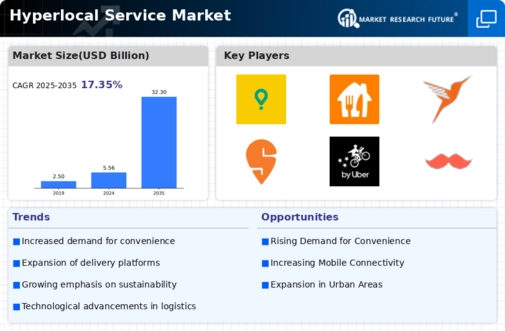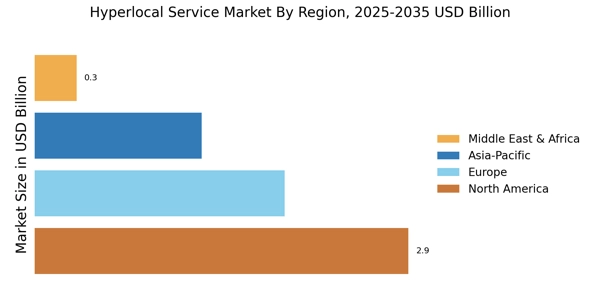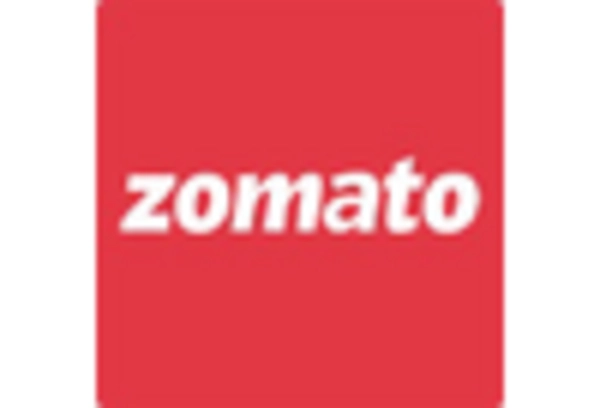The Hyperlocal Service Market is characterized by a dynamic competitive landscape, driven by rapid technological advancements and evolving consumer preferences. Key players such as Uber (US), DoorDash (US), and Gojek (ID) are strategically positioning themselves through innovation and regional expansion. Uber (US) continues to enhance its delivery capabilities by integrating advanced AI technologies, which not only streamline operations but also improve customer experience. Meanwhile, DoorDash (US) has focused on diversifying its service offerings, including grocery delivery, which reflects a broader trend towards multi-service platforms. Gojek (ID), on the other hand, emphasizes local partnerships to strengthen its market presence in Southeast Asia, indicating a trend towards localized service models that cater to specific regional needs.
The competitive structure of the Hyperlocal Service Market appears moderately fragmented, with numerous players vying for market share. This fragmentation is influenced by the varying degrees of service specialization and geographic focus among key players. Companies are increasingly adopting tactics such as supply chain optimization and localized service offerings to enhance operational efficiency and customer satisfaction. The collective influence of these strategies shapes a competitive environment where agility and responsiveness to local market demands are paramount.
In August 2025, Uber (US) announced a partnership with a leading grocery chain to enhance its delivery network, aiming to capture a larger share of the grocery delivery segment. This strategic move is significant as it not only diversifies Uber's service portfolio but also positions the company to compete more effectively against rivals like Instacart (US), which has established a strong foothold in this market. The partnership underscores the importance of collaboration in expanding service capabilities and meeting consumer demands for convenience.
In September 2025, DoorDash (US) launched a new subscription service that offers customers unlimited deliveries for a monthly fee. This initiative is indicative of a broader trend towards subscription-based models in the hyperlocal service sector, which may enhance customer loyalty and provide a steady revenue stream. By adopting this strategy, DoorDash (US) aims to differentiate itself in a crowded market, potentially leading to increased customer retention and satisfaction.
In July 2025, Gojek (ID) expanded its operations into new cities within Indonesia, leveraging its existing infrastructure to enhance service delivery. This expansion reflects Gojek's commitment to regional growth and its strategy of tapping into underserved markets. By focusing on local expansion, Gojek (ID) is likely to strengthen its competitive position against other regional players, such as Grab (SG), which is also pursuing aggressive growth strategies in Southeast Asia.
As of October 2025, the Hyperlocal Service Market is witnessing trends that emphasize digitalization, sustainability, and AI integration. Companies are increasingly forming strategic alliances to enhance their service offerings and operational efficiencies. The competitive differentiation is shifting from price-based competition to a focus on innovation, technology, and supply chain reliability. This evolution suggests that future success in the hyperlocal service sector will hinge on the ability to adapt to changing consumer expectations and leverage technological advancements.


















Leave a Comment